The InteriorThe altar proper is inside the enclosure with a narrow aisle around it and steps to it. The floor inside was sloped outwards so that the water used for cleaning the altar could be drained. (Gutters open up along the exterior walls.) The top of the short sides of the altar had these slabs with winged lions and foliate volutes. |
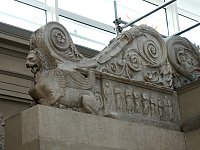
|
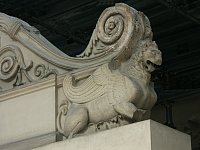
|

|
| |
|
The top of the actual altar--the short sidesFriezes decorate the lower parts of the slabs, one, probably picturing a sacrifice, and the other (see above) representing veiled Vestal Virgins. |
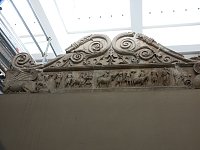
|

|
| |
|
The internal wall of the enclosureThe lower part of the internal wall imitates the wooden fence that would have enclosed a sacrificial altar. The fence would have been decorated with garlands. Here in stone, the swags or loops imitate the simpler natural ornament; this upper register has a sequence of festoons hanging from ox skulls (bucrania), with spaced ritual shallow bowls in the intervals. The hanging festoons include ears of wheat, berries, and a variety of fruit and nuts, all underscoring the symbolic value of peace. The ox skulls symbolize the sacrificial offerings. Between the "fence" boards and the festoons is a palmette border. |
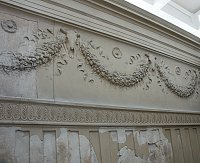
|
| |
|

|

|
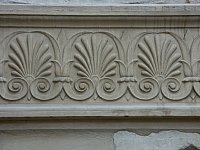
|
| |
|

|
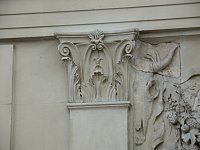
|
Detail of the interior of the enclosure wall |
| |
|
Details of the podium on which the altar sits |

|

|
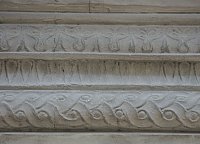
|
| |
|
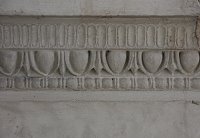
|
|


 Click here to return to index of art historical sites.
Click here to return to index of art historical sites.
 Click here to return to index of artists and architects.
Click here to return to index of artists and architects.
 Click here to return to chronological index.
Click here to return to chronological index.
 Click here to see the home page of Bluffton University.
Click here to see the home page of Bluffton University.

